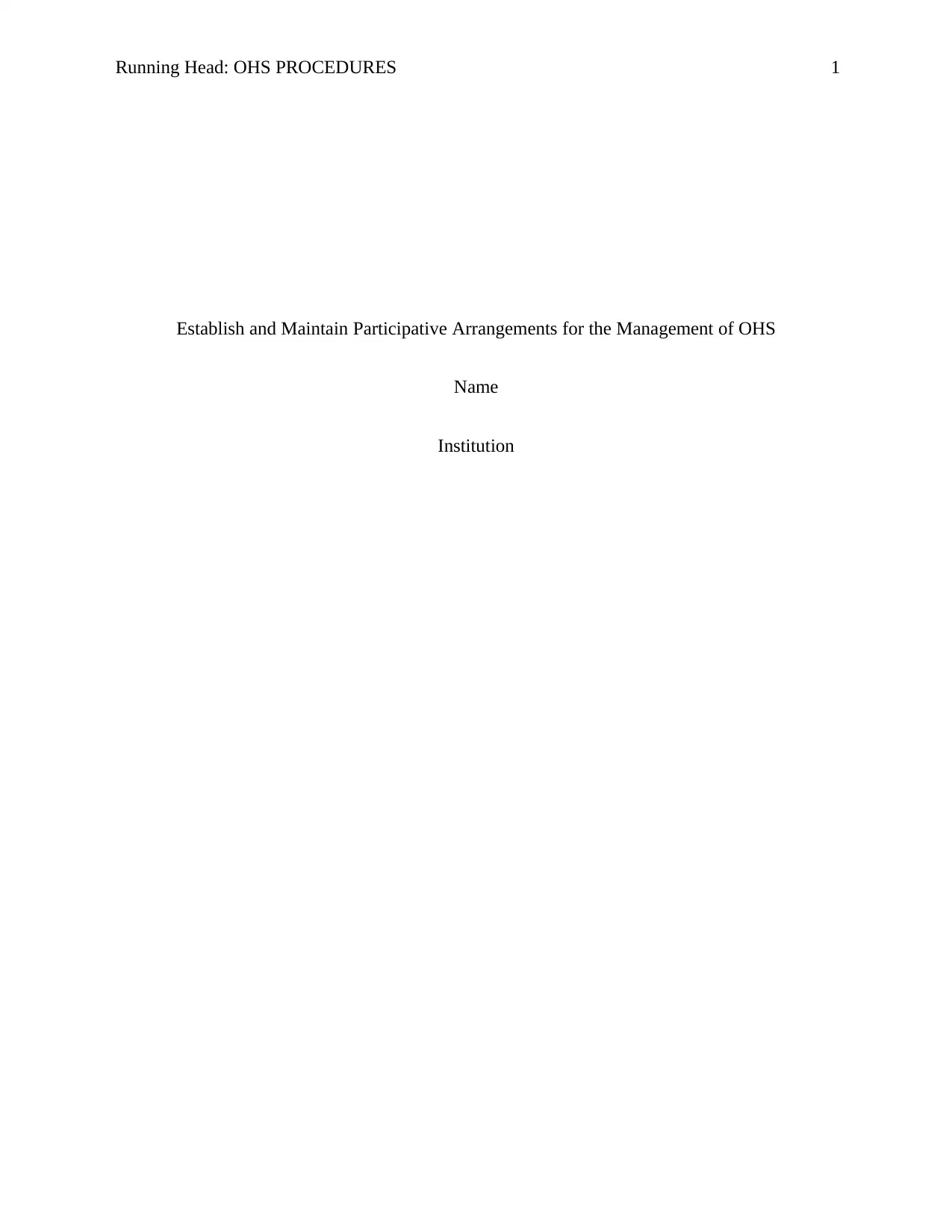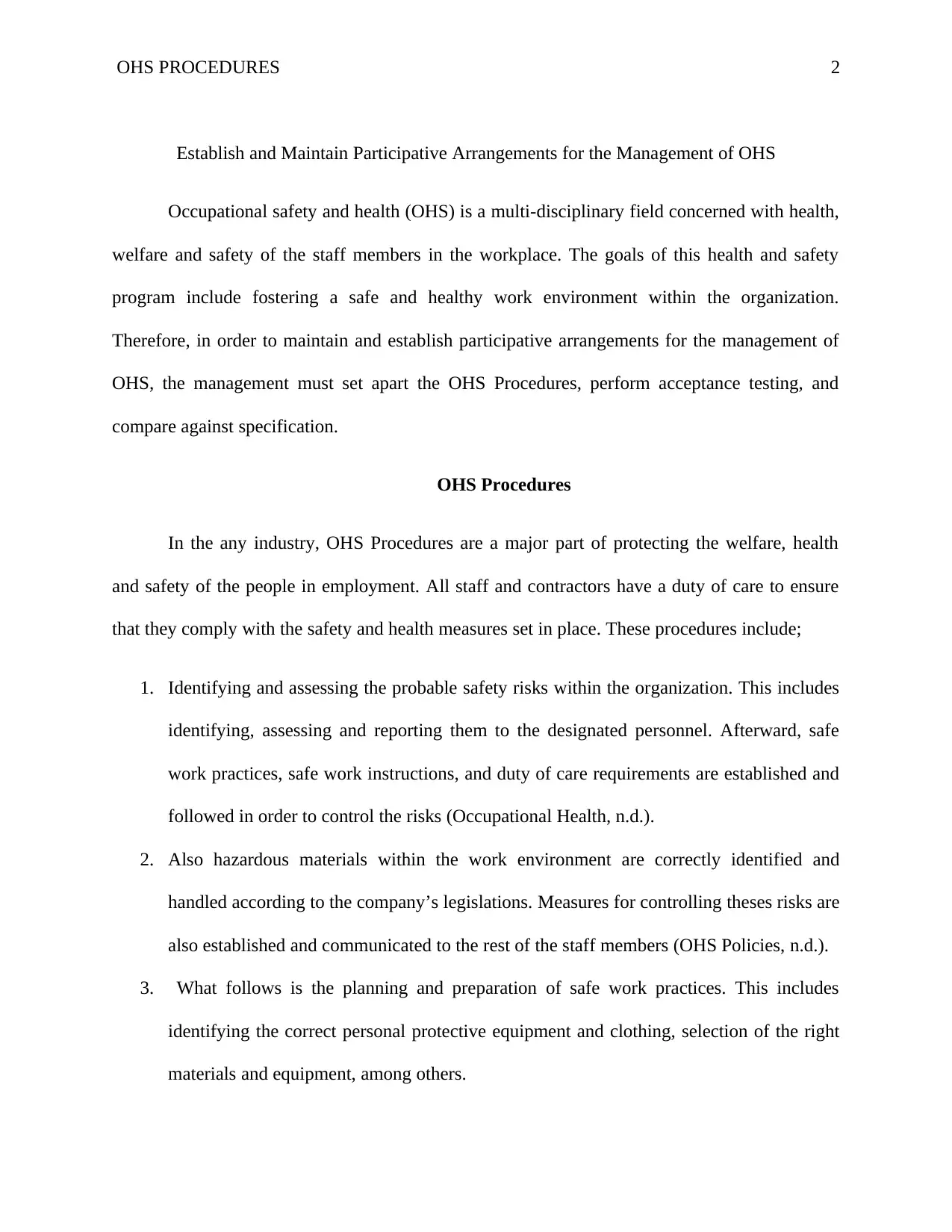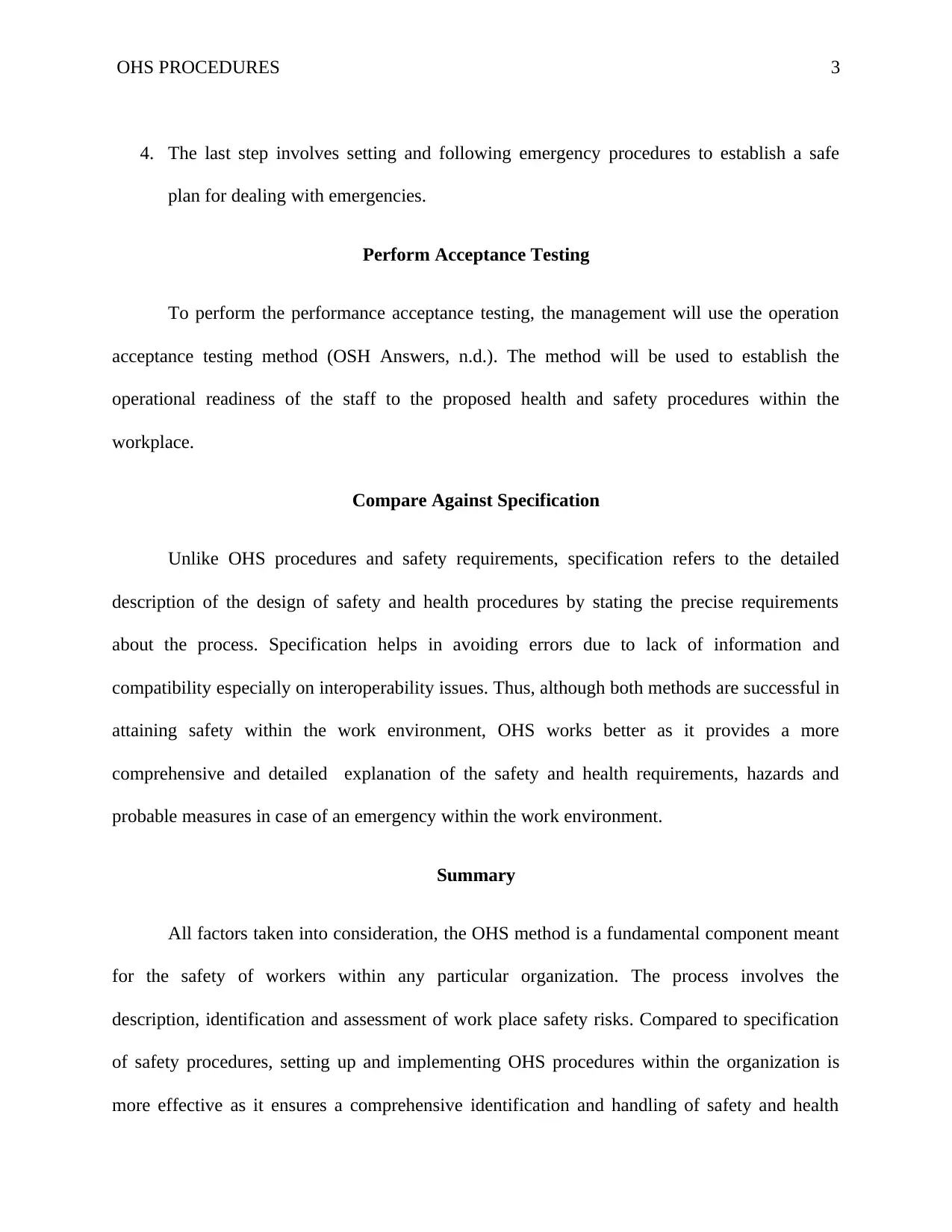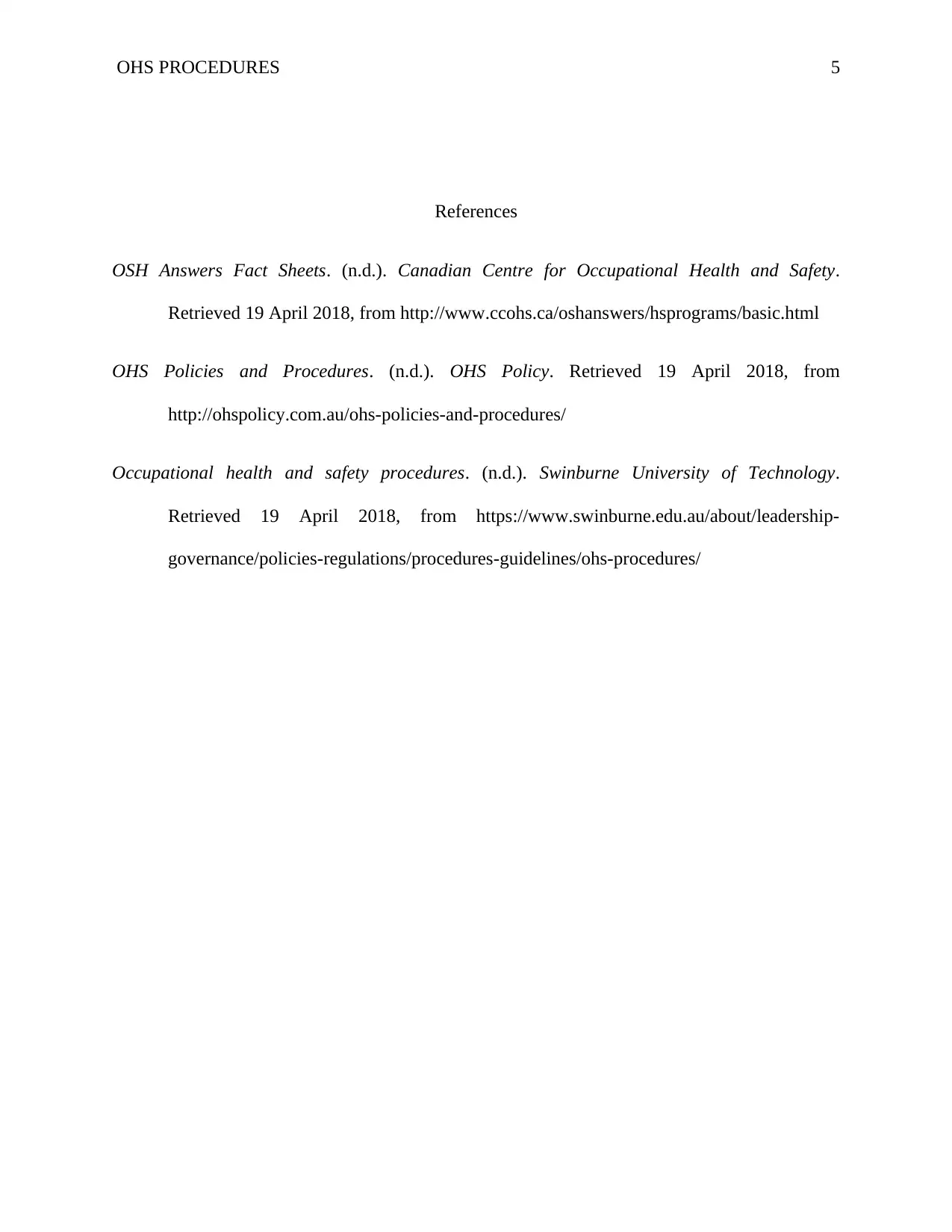OHS: Establishing and Maintaining Participative Management Systems
VerifiedAdded on 2023/06/13
|5
|665
|73
Report
AI Summary
This report discusses the establishment and maintenance of participative arrangements for Occupational Health and Safety (OHS) management within an organization. It emphasizes the importance of OHS procedures in protecting the health, welfare, and safety of staff members. Key aspects covered include identifying and assessing safety risks, handling hazardous materials, planning safe work practices, and setting emergency procedures. The report also touches on performance acceptance testing to ensure staff readiness for the proposed safety procedures. Furthermore, it compares OHS procedures against safety specifications, highlighting the comprehensive nature of OHS in providing detailed explanations of safety requirements, hazards, and emergency measures. The report concludes that implementing a sound OHS plan is crucial for ensuring employee safety, health, and welfare in the workplace, advocating for its adoption by all organizations.
1 out of 5












![[object Object]](/_next/static/media/star-bottom.7253800d.svg)